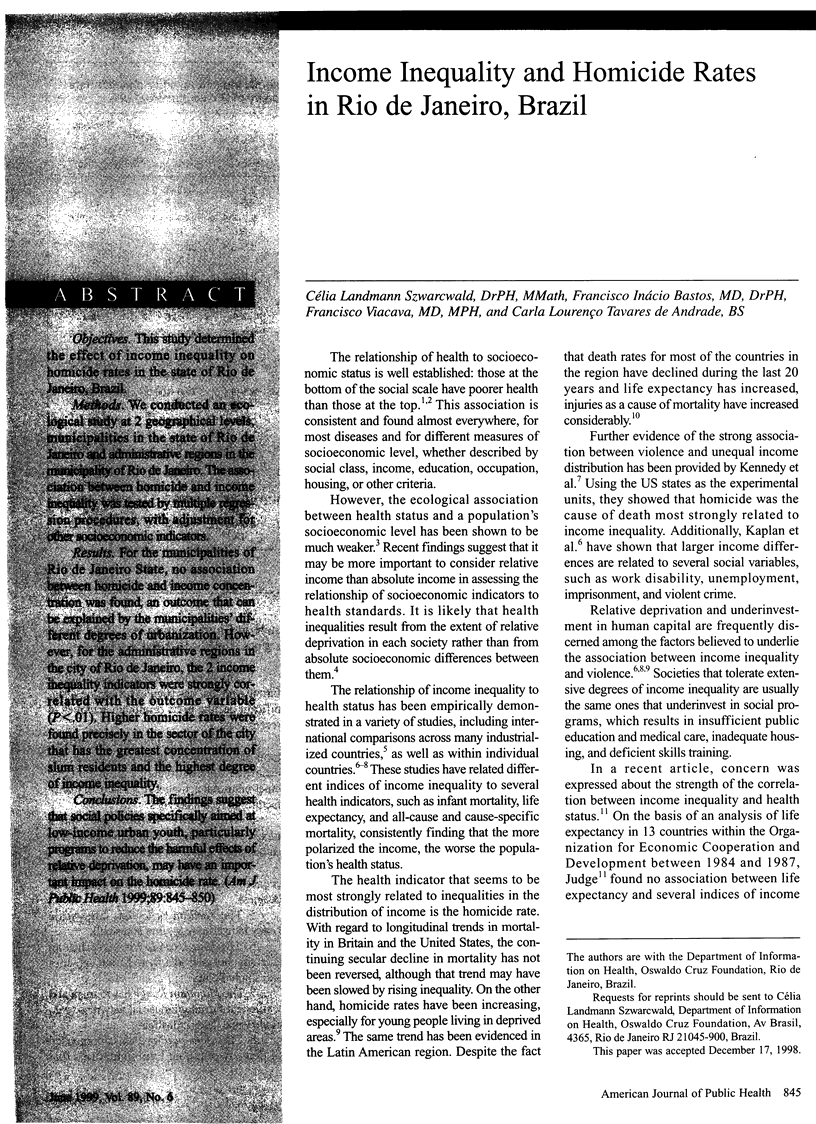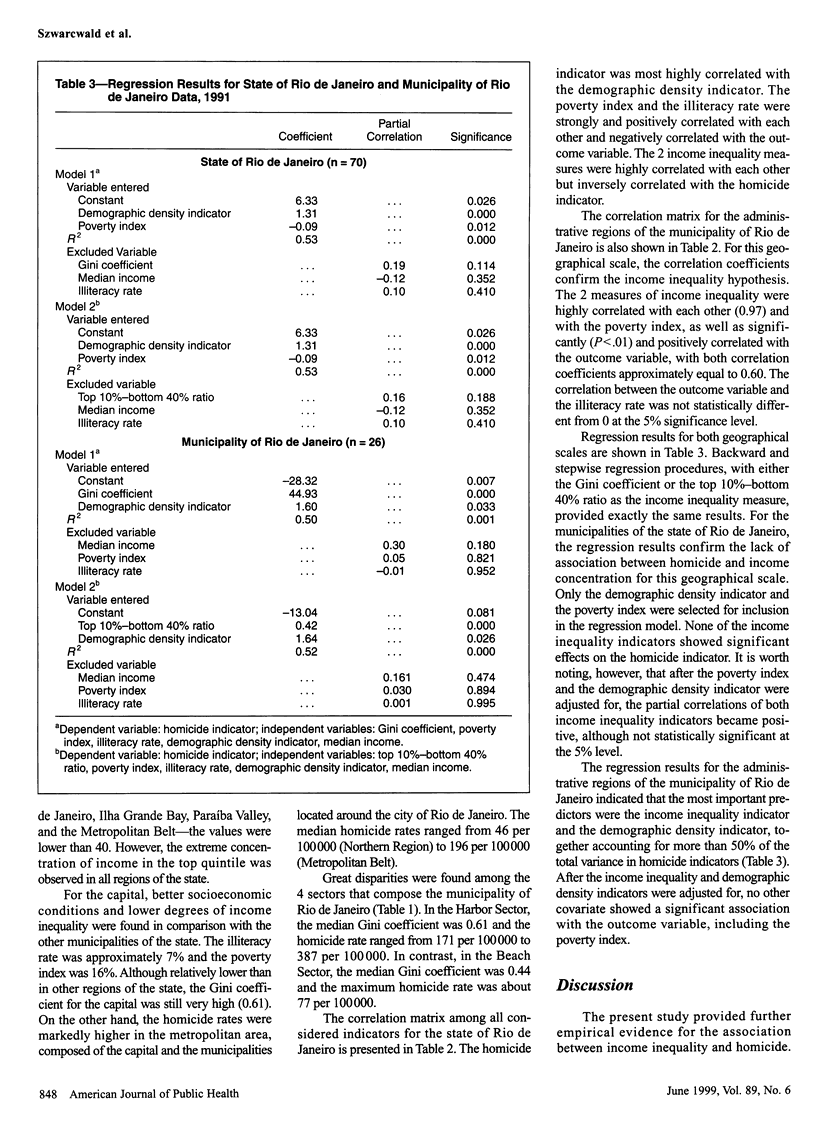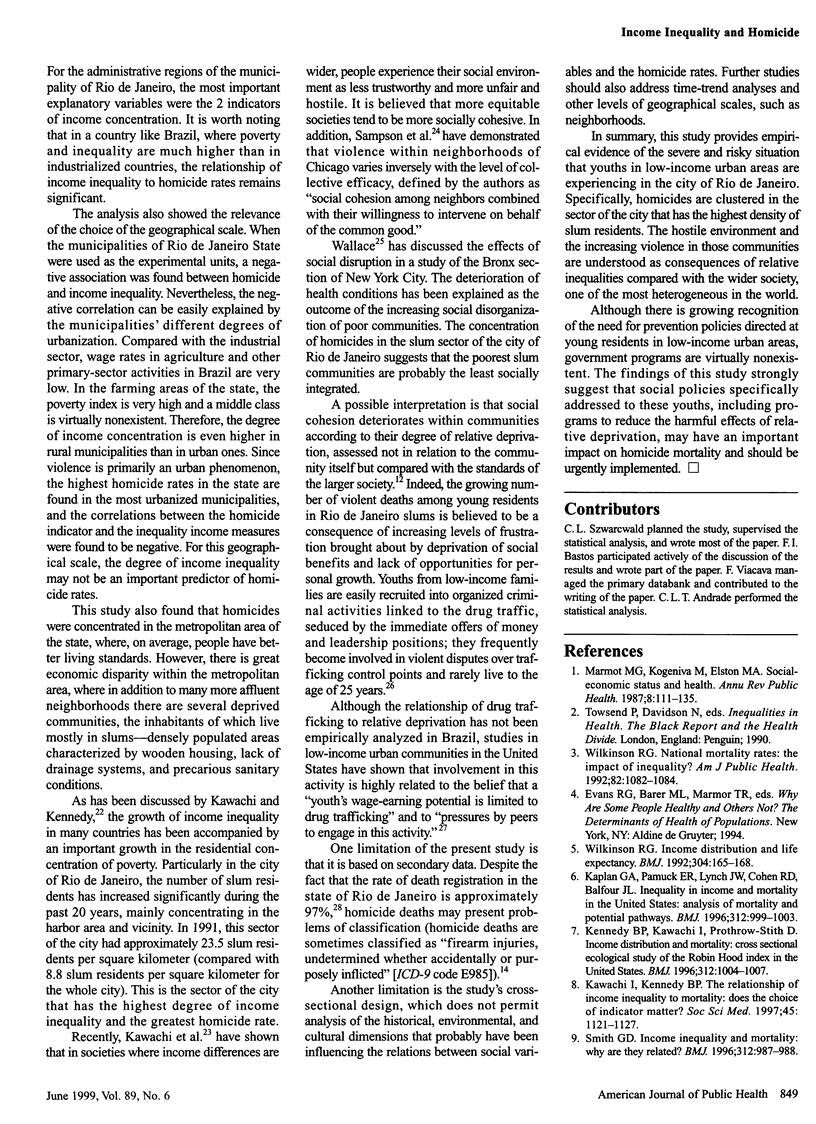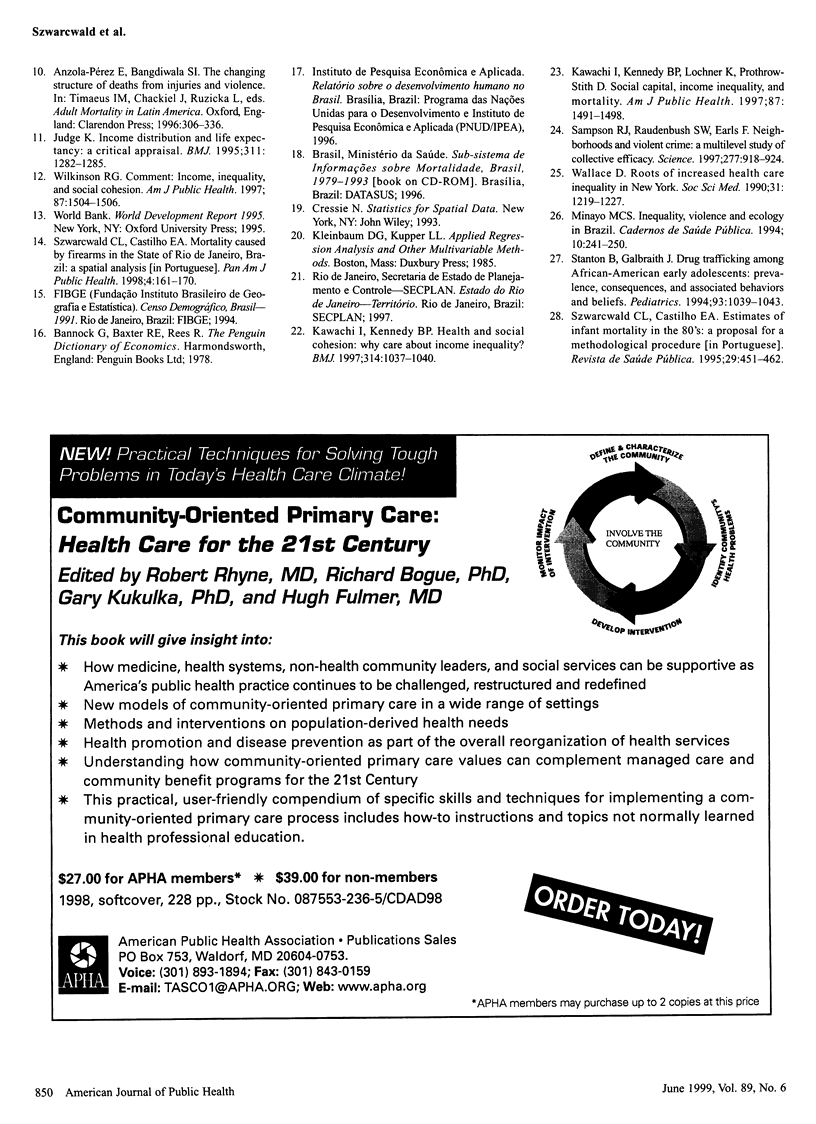Abstract
OBJECTIVES: This study determined the effect of income inequality on homicide rates in the state of Rio de Janeiro, Brazil. METHODS: We conducted an ecological study at 2 geographical levels, municipalities in the state of Rio de Janeiro and administrative regions in the municipality of Rio de Janeiro. The association between homicide and income inequality was tested by multiple regression procedures, with adjustment for other socioeconomic indicators. RESULTS: For the municipalities of Rio de Janeiro State, no association between homicide and income concentration was found an outcome that can be explained by the municipalities' different degrees of urbanization. However, for the administrative regions in the city of Rio de Janeiro, the 2 income inequality indicators were strongly correlated with the outcome variable (P < .01). Higher homicide rates were found precisely in the sector of the city that has the greatest concentration of slum residents and the highest degree of income inequality. CONCLUSIONS: The findings suggest that social policies specifically aimed at low-income urban youth, particularly programs to reduce the harmful effects of relative deprivation, may have an important impact on the homicide rate.
Full text
PDF





Selected References
These references are in PubMed. This may not be the complete list of references from this article.
- Judge K. Income distribution and life expectancy: a critical appraisal. BMJ. 1995 Nov 11;311(7015):1282–1287. doi: 10.1136/bmj.311.7015.1282. [DOI] [PMC free article] [PubMed] [Google Scholar]
- Kaplan G. A., Pamuk E. R., Lynch J. W., Cohen R. D., Balfour J. L. Inequality in income and mortality in the United States: analysis of mortality and potential pathways. BMJ. 1996 Apr 20;312(7037):999–1003. doi: 10.1136/bmj.312.7037.999. [DOI] [PMC free article] [PubMed] [Google Scholar]
- Kawachi I., Kennedy B. P. Health and social cohesion: why care about income inequality? BMJ. 1997 Apr 5;314(7086):1037–1040. doi: 10.1136/bmj.314.7086.1037. [DOI] [PMC free article] [PubMed] [Google Scholar]
- Kawachi I., Kennedy B. P., Lochner K., Prothrow-Stith D. Social capital, income inequality, and mortality. Am J Public Health. 1997 Sep;87(9):1491–1498. doi: 10.2105/ajph.87.9.1491. [DOI] [PMC free article] [PubMed] [Google Scholar]
- Kennedy B. P., Kawachi I., Prothrow-Stith D. Income distribution and mortality: cross sectional ecological study of the Robin Hood index in the United States. BMJ. 1996 Apr 20;312(7037):1004–1007. doi: 10.1136/bmj.312.7037.1004. [DOI] [PMC free article] [PubMed] [Google Scholar]
- Marmot M. G., Kogevinas M., Elston M. A. Social/economic status and disease. Annu Rev Public Health. 1987;8:111–135. doi: 10.1146/annurev.pu.08.050187.000551. [DOI] [PubMed] [Google Scholar]
- Minayo M. C. Inequality, violence, and ecology in Brazil. Cad Saude Publica. 2004 Feb 3;10(2):241–250. doi: 10.1590/s0102-311x1994000200011. [DOI] [PubMed] [Google Scholar]
- Sampson R. J., Raudenbush S. W., Earls F. Neighborhoods and violent crime: a multilevel study of collective efficacy. Science. 1997 Aug 15;277(5328):918–924. doi: 10.1126/science.277.5328.918. [DOI] [PubMed] [Google Scholar]
- Smith G. D. Income inequality and mortality: why are they related? BMJ. 1996 Apr 20;312(7037):987–988. doi: 10.1136/bmj.312.7037.987. [DOI] [PMC free article] [PubMed] [Google Scholar]
- Stanton B., Galbraith J. Drug trafficking among African-American early adolescents: prevalence, consequences, and associated behaviors and beliefs. Pediatrics. 1994 Jun;93(6 Pt 2):1039–1043. [PubMed] [Google Scholar]
- Szwarcwald C. L., de Castilho E. A. Estimativas da mortalidade infantil no Brasil, década de oitenta: proposta de procedimento metodológico. Rev Saude Publica. 1995 Dec;29(6):451–462. doi: 10.1590/s0034-89101995000600006. [DOI] [PubMed] [Google Scholar]
- Szwarcwald C. L., de Castilho E. A. Mortalidade por armas de fogo no estado do Rio de Janeiro, Brasil: uma análise espacial. Rev Panam Salud Publica. 1998 Sep;4(3):161–170. doi: 10.1590/s1020-49891998000900003. [DOI] [PubMed] [Google Scholar]
- Wallace D. Roots of increased health care inequality in New York. Soc Sci Med. 1990;31(11):1219–1227. doi: 10.1016/0277-9536(90)90127-e. [DOI] [PubMed] [Google Scholar]
- Wilkinson R. G. Comment: income, inequality, and social cohesion. Am J Public Health. 1997 Sep;87(9):1504–1506. doi: 10.2105/ajph.87.9.1504. [DOI] [PMC free article] [PubMed] [Google Scholar]
- Wilkinson R. G. Income distribution and life expectancy. BMJ. 1992 Jan 18;304(6820):165–168. doi: 10.1136/bmj.304.6820.165. [DOI] [PMC free article] [PubMed] [Google Scholar]
- Wilkinson R. G. National mortality rates: the impact of inequality? Am J Public Health. 1992 Aug;82(8):1082–1084. doi: 10.2105/ajph.82.8.1082. [DOI] [PMC free article] [PubMed] [Google Scholar]


